Ministry of Communications
Union Minister of Communications Shri Jyotiraditya Scindia Leads Strategic Industry Roundtable to Chart India’s Telecom Vision
Hails India’s digital and entrepreneurial revolution at Nation Builders Summit, IMC 2025
Government, CEOs, and Unicorns Join Forces to Build India’s Digital Future and Global Innovation Leadership
India Aims to Become Global Telecom Export Powerhouse with Design-Solve-Scale Strategy
Startups, Unicorns, and Government Collaborate to Create Bharat-Centric, AI-Powered Solutions
“This is your time. India will not just be vocal for local but local for global designing in India, solving in India and scaling for the world.” : Union Minister Shri Scindia
Public-Private Synergy to Drive Inclusive Growth, Deeptech Innovation, and Global Competitiveness
IMC 2025 Showcases India's Telecom Leadership and Startup Synergy
Posted On:
09 OCT 2025 3:28PM by PIB Delhi
In a powerful demonstration of public-private collaboration shaping India’s digital future, the Union Minister of Communications, Shri Jyotiraditya M. Scindia, today spearheaded two pivotal conversations at the India Mobile Congress (IMC) 2025—each reflecting a cornerstone of India’s vision to become a global telecom manufacturing powerhouse and an innovation-first economy.
The day began with a high-powered CEO Roundtable on “Charting India’s Telecom Vision: A Leadership Dialogue”, drawing 37 leaders from across the telecom value chain. This was followed by a dynamic interaction titled “Nation Builders: How Unicorns and Government are Co-Creating the Future”, where Union Minister Shri Scindia engaged directly with some of India’s most innovative startups and unicorn founders. Together, the sessions reinforced the government’s commitment to co-creating a digitally inclusive, technologically sovereign, and globally competitive telecom ecosystem.
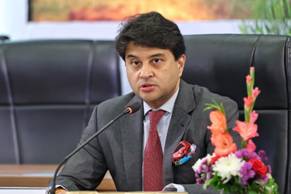
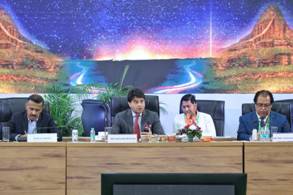
Charting India’s Telecom Vision: Industry and Government Align on Strategy
Addressing the CEO Roundtable, Union Minister Shri Scindia underscored the telecom sector’s pivotal role as the backbone of India’s digital economy and a vehicle for inclusion for 1.4 billion citizens. He stated that the success of Digital India had been shaped by the innovation of the people and the facilitation provided by the government. He emphasized that together, they were not just connecting people, but also building the digital architecture of a new India and a new global era.
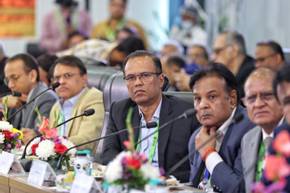
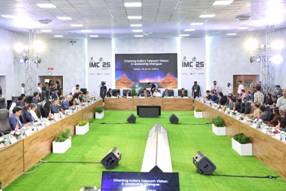
India’s telecom sector is undergoing a transformative shift, anchored in domestic manufacturing and R&D. India is now nearly self-sufficient in critical telecom products, with much of the 5G rollout powered by indigenously manufactured equipment — a major leap towards technology sovereignty.
The Union Minister outlined India’s strategic DSS framework — Design in India, Solve in India, Scale from India — calling it a global growth vision, not protectionism. He urged the industry to invest further in IP creation, sustainable product innovation, and resilient, scalable solutions that meet India’s unique needs while strengthening global supply chains.
Union Minister Shri Scindia called on the CEOs to “move forward as partners in innovation,” co-develop standards, cybersecurity frameworks, and invest in skilling through initiatives like 5G Labs and Centres of Excellence.
Nation Builders: Startups and Unicorns Powering India’s Innovation Engine
Later in the day, Union Minister Shri Jyotiraditya Scindia, addressed the Nation Builders Summit at India Mobile Congress 2025, outlining how India has undergone a historic transformation over the past decade from a services-led economy to a global powerhouse for digital innovation, advanced manufacturing, and entrepreneurship.
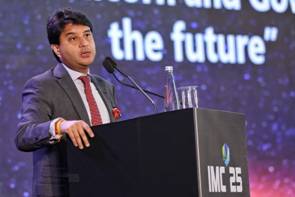
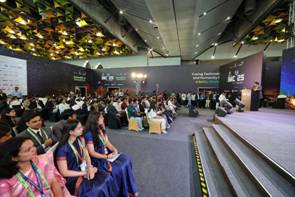
The Union Minister noted that a nation once largely defined as a “services country” has today vertically integrated backwards into high-value manufacturing from digital services to products, and all the way to semiconductor chips. He credited the vision of Prime Minister Narendra Modi, whose push for Digital India, Startup India and the Semiconductor Mission over the last 11 years laid the foundation for this leap.
“India, which could not even imagine manufacturing chips a decade ago, is today building semiconductor fabs from Gujarat to Assam,” he said, adding that this revolution mirrors the impact of roadways and railways during the Industrial Revolution, connecting people, production, and opportunity at scale.
Shri Scindia underscored India’s rise as the third-largest digital nation in the world, with 1.2 billion mobile subscribers, 974 million Internet users, and 944 million broadband subscribers. With 46% of the world’s digital transactions happening through UPI amounting to $3 trillion annually, India has built the largest digital public infrastructure in the world, empowering millions to participate in the digital economy.
He highlighted how the startup ecosystem has exploded from just a handful of enterprises 15 years ago to over 180,000 startups and more than 100 unicorns today. This wave of innovation, he noted, is no longer limited to metros: “Today, a majority of companies listed on the stock exchange are based out of Tier 2 and Tier 3 cities. Entrepreneurial energy is rising from every small town and district.”
The Union Minister also spotlighted a powerful shift towards gender equity in entrepreneurship, with over 73,000 women-led startups emerging as strong drivers of growth. “If India must move from Amrit Kaal to Shatabdi Kaal, every citizen especially women must be equal participants in building the New India of 2047,” he said.
Drawing on his experiences at Stanford, Shri Scindia invoked the lessons of Andy Grove “the only constant is change” and “only the paranoid survive” emphasizing that these principles define the DNA of Indian entrepreneurship today. He praised the government–industry partnership model that has replaced regulation with facilitation: “Government provides the runway, and entrepreneurs provide the flight.”
Calling this a defining decade for India, he said, “This is your time. India will not just be vocal for local but local for global designing in India, solving in India and scaling for the world.”
The dialogue highlighted how government initiatives such as Startup India, Digital India, and the Telecom Technology Development Fund (TTDF) have been instrumental in nurturing innovation across sectors like agritech, healthtech, deeptech, and AI. These programmes have catalysed an ecosystem that enables startups to grow, scale, and tackle real-world challenges.
IMC 2025: A Showcase of Telecom Leadership and Startup Synergy
IMC 2025 served as a powerful platform for the convergence of leadership, innovation, and policy direction. Both sessions demonstrated the shared ambition of government and industry to position India not only as a digital economy leader but also as a global innovation powerhouse.
****
Samrat/ Allen
(Release ID: 2176771)
Visitor Counter : 195